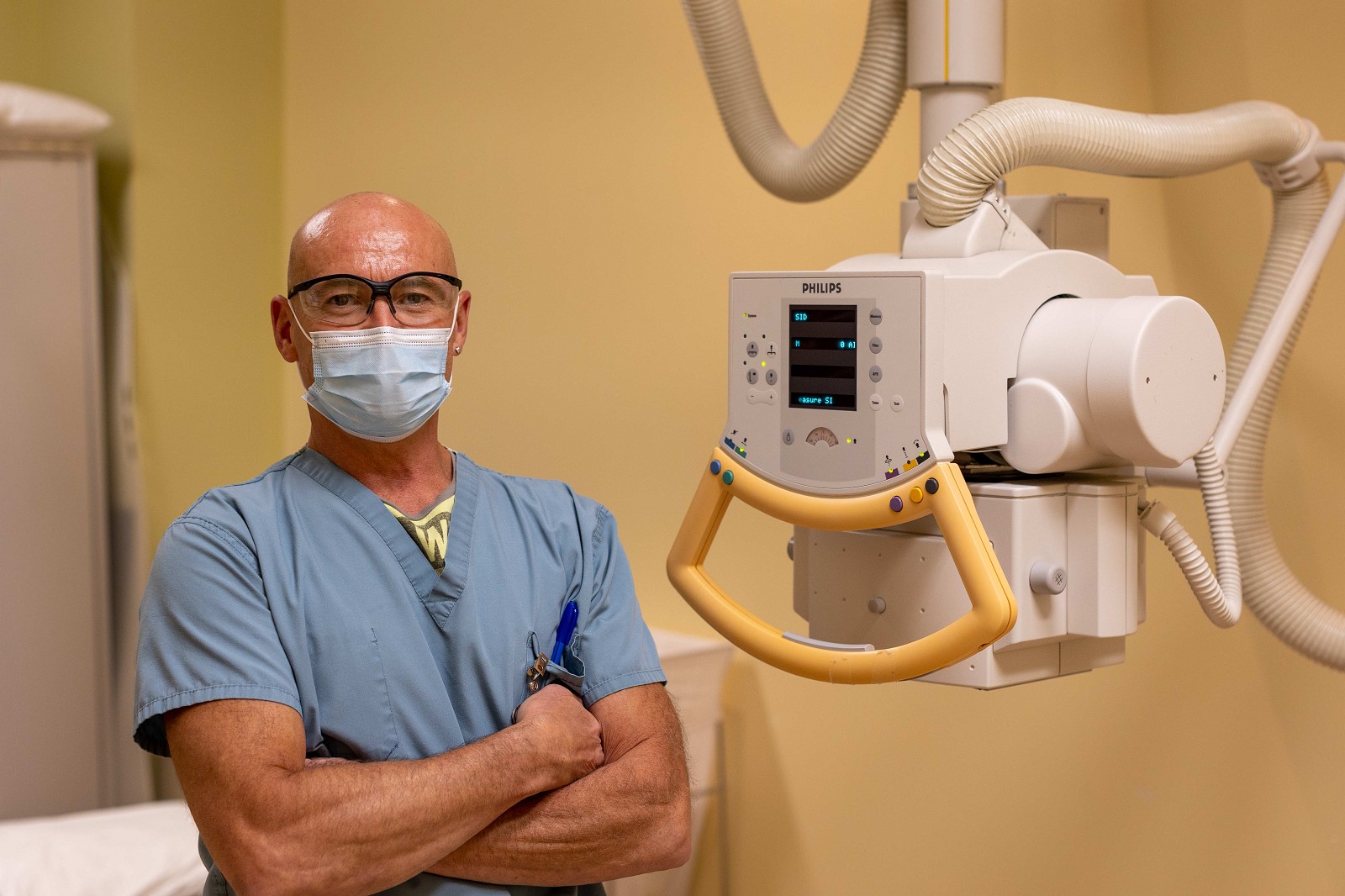New X-ray Unit Marks "End of an Era"
Published Monday, November 8, 2021

by Graham Strong
It’s the end of an era for the old X-ray machine at the Fracture Clinic in the Thunder Bay Regional Health Sciences Centre – and the beginning of a new one. Thanks to the support of the Thunder Bay Regional Health Sciences Foundation’s generous donors, the Fracture Clinic is in the process of replacing its aging X-ray machine.
“I know that when they were first planning the Hospital, the orthopaedic surgeons fought hard to get an X-ray machine installed at the Fracture Clinic,” said Carrie Vita, who oversees the Fracture Clinic as Manager of Ambulatory Care. “Now, I can’t imagine what we’d do without it.”
The old unit, which is original to when the Hospital opened in 2004, is nearing end-of-life.
“Usually, the lifespan of X-ray equipment is 12 to 15 years, so we’re past that,” said Craig Willson, Manager of Diagnostic Imaging. “It still works at the moment, but it requires much more maintenance to keep running and it’s harder to find parts. At some point it will just stop working. We want to replace it before that happens, obviously. Otherwise, there would be delays for patients who need X-rays.”
Plus, the technology is significantly better. Most importantly, radiation dosages have been consistently dropping with each new generation of digital X-ray machine. The new technology also provides higher resolution images so X-ray technologists and doctors can see smaller fractures in better detail. This one also takes the image faster so there is less chance of the patient moving and blurring the image, providing a clearer image still.
There are improvements to the unit from a physical standpoint as well. The bed portion of the X-ray machine can be lowered further than previous models, which helps those patients who have a harder time getting up and down from the table.
The actual imaging portion of the machine has a wider range as well, going all the way to the floor. This greatly improves patient comfort. Sometimes, orthopaedic surgeons require images of patients standing to see how the bones are reacting in a weight-bearing scenario. Previously, patients would have to climb a set of stairs, which could be uncomfortable for some with a broken bone. Now, patients can stand firmly on the ground for better safety and comfort.
Jamie Ball, who previously went to the Fracture Clinic with a twisted knee, was grateful he could get his X-rays done within the clinic.
“My knee wasn’t too bad – I could still sort of walk,” Ball said. “But what would it be like for someone with a broken leg to go all the way down to Diagnostic Imaging and back again?”
He also knows what it is like taking children to the Fracture Clinic for care.
“Kevin Gilbart (the “Happy Face Cast Guy”) has casted both of my sons from hockey and snowboarding injuries. It is so much easier and more comfortable doing everything in one clinic,” he said.
Besides convenience, having an X-ray machine in the Fracture Clinic also means shorter appointment times for patients. In turn, that means the clinic can see more patients per day. Lastly, it eliminates the need for extra staff to accompany some patients back and forth to Diagnostic Imaging.
You can help fund this important piece of equipment! Please visit the Foundation’s online donation form at healthsciencesfoundation.ca/xray or call the Donation Centre at (807) 345-4673.